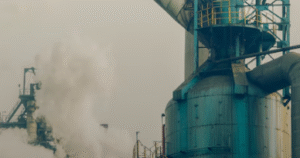# **Here’s How Much $100 Invested in Kinross Gold ($KGC) 10 Years Ago Would Be Worth Today**
Investing in gold mining stocks like **Kinross Gold Corporation ($KGC)** has been a popular strategy among long-term investors seeking exposure to the precious metal sector. But how well has Kinross Gold performed over the past decade? If you had invested **$100 in Kinross Gold 10 years ago**, what would your investment be worth today?
Let’s analyze Kinross Gold’s historical performance, factors affecting its stock, and whether it remains a viable investment in 2024.
### **Kinross Gold ($KGC): 10-Year Stock Performance**
#### **Stock Price Evolution from 2014 to 2024**
A decade ago, in mid-2014, **Kinross Gold’s stock traded around $4.50 per share**. The company, a leading gold mining firm, experienced significant fluctuations, driven by gold prices, production costs, and macroeconomic events.
Fast forward to 2024, Kinross Gold’s stock currently hovers around **$6.30 per share** (as of June 2024). While this represents some growth, it may not be an astounding return compared to other asset classes like the S&P 500 or Bitcoin.
Let’s break down the **return on investment (ROI)** on a $100 stake in Kinross Gold.
### **How Much Would $100 Be Worth Today?**
If you invested **$100 in Kinross Gold in 2014**, at a stock price of **$4.50 per share**, you would have acquired approximately **22.22 shares**.
– At today’s stock price of **$6.30**, those **22.22 shares would now be valued at approximately $140**.
– This represents **a gain of 40% over 10 years**, translating to a **CAGR (Compound Annual Growth Rate) of roughly 3.4%**.
Compared to broader market indices like the **S&P 500**, which delivered an **average annual return of ~10% in the same period**, Kinross Gold’s returns appear moderate. However, investors in the gold sector typically focus on **hedging against inflation, economic uncertainty, and long-term appreciation** rather than short-term gains.
### **Key Factors That Affected Kinross Gold Stock Over the Years**
Several elements contributed to Kinross Gold’s performance over the past decade.
#### **1. Gold Prices Volatility**
Since Kinross Gold operates in the gold mining sector, its stock price is **highly correlated with gold prices**. Gold rallied significantly in **2020 and 2021**, surpassing **$2,000 per ounce** due to inflation fears and economic stimulus. However, corrections in gold prices impacted Kinross Gold’s growth.
#### **2. Production & Operational Efficiency**
Kinross Gold operates **mines across multiple countries**, including the U.S., Brazil, and Mauritania. The company faced challenges including **production costs, geopolitical risks, and operational hurdles**, affecting its overall profitability.
#### **3. Macroeconomic & Federal Reserve Policies**
Interest rate policies set by the **Federal Reserve** influence gold prices. Rising interest rates typically reduce gold’s appeal, **negatively affecting Kinross Gold stocks** in some market cycles. Periods of **economic uncertainty and inflation**, however, boosted demand for gold.
#### **4. Dividend Payments & Shareholder Returns**
Unlike some gold mining companies that offer high dividends, Kinross Gold’s dividend yield has remained relatively low. This makes the stock less attractive for income-focused investors, who might prefer more **high-yielding dividend stocks**.
### **Is Kinross Gold a Good Investment in 2024?**
Looking forward, investing in **Kinross Gold ($KGC) in 2024** depends on several factors:
✅ **Gold Price Trends:** If gold prices continue rising past **$2,000 per ounce**, Kinross could see strong price appreciation.
✅ **Operational Growth:** Kinross Gold’s expansion efforts in **North America and Africa** could boost production efficiency, enhancing profitability.
⚠️ **Risk Factors:** If the Fed maintains **higher interest rates**, gold prices may struggle, indirectly impacting Kinross Gold’s stock performance.
For investors seeking **long-term exposure to gold** but preferring stocks over physical bullion, Kinross Gold remains a **moderate-growth investment option**. However, those looking for **higher returns** may explore alternative asset classes such as ETFs, dividend stocks, or tech equities.
### **Final Thoughts: Historical Performance vs. Future Potential**
Investing in Kinross Gold ($KGC) a decade ago would have **turned $100 into approximately $140**, resulting in **40% gains over 10 years**. While not the highest-performing stock, it has offered stable exposure to the gold sector.
As gold prices fluctuate and central bank policies evolve, strategic investors will continue to watch Kinross Gold as a potential **hedge against inflation and market uncertainty**. Whether it’s worth investing in today depends on your risk tolerance and portfolio objectives.
Would you still consider **gold mining stocks like Kinross Gold** in your portfolio, or is it time to shift towards emerging opportunities in **tech and AI-driven markets**? Share your thoughts below.
### **Relevant Hashtags for Maximum SEO Reach**
#GoldStocks #KinrossGold #StockMarket #Investing #GoldMining #WealthBuilding #InflationHedge #MarketAnalysis







Comments are closed.